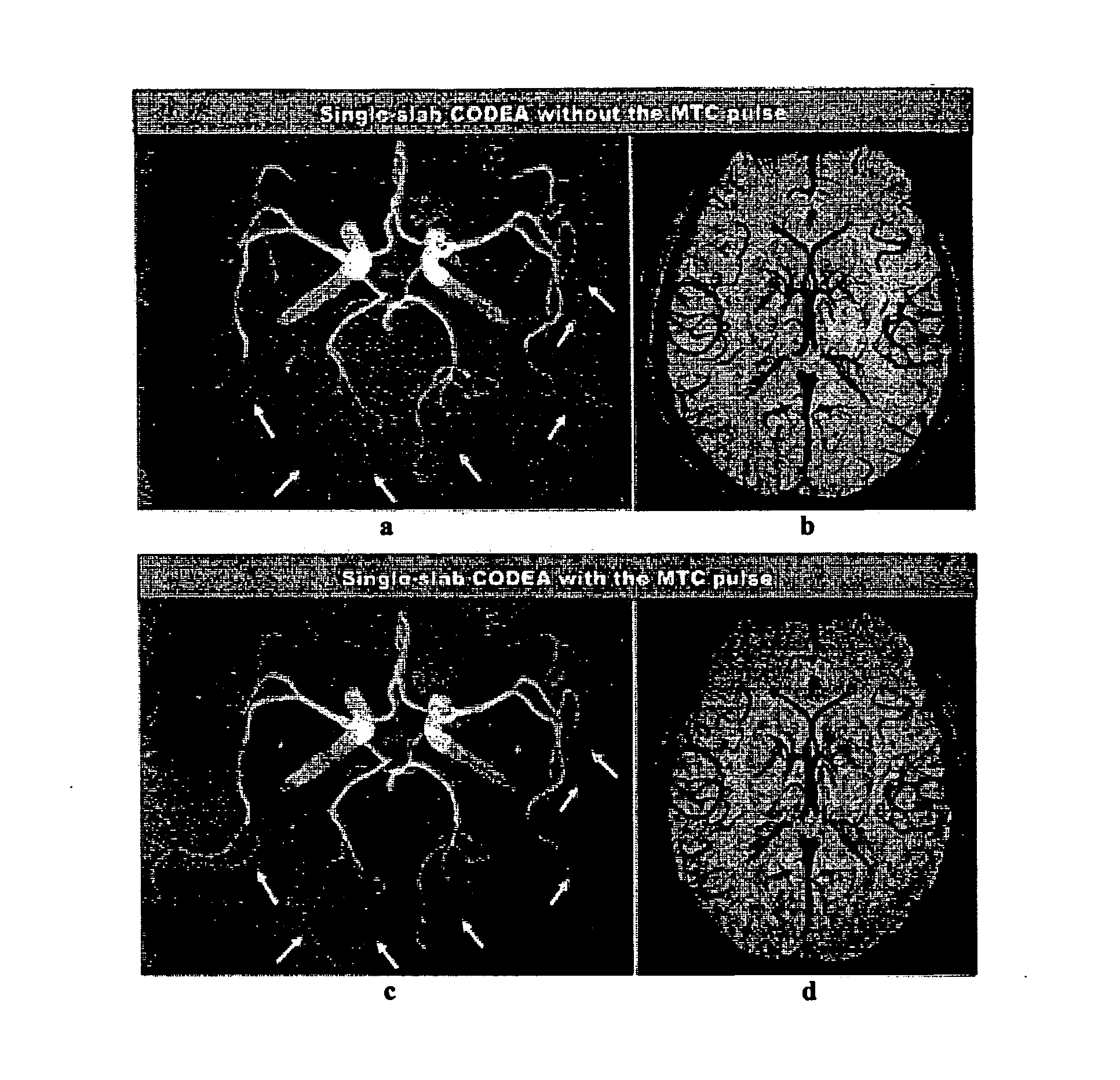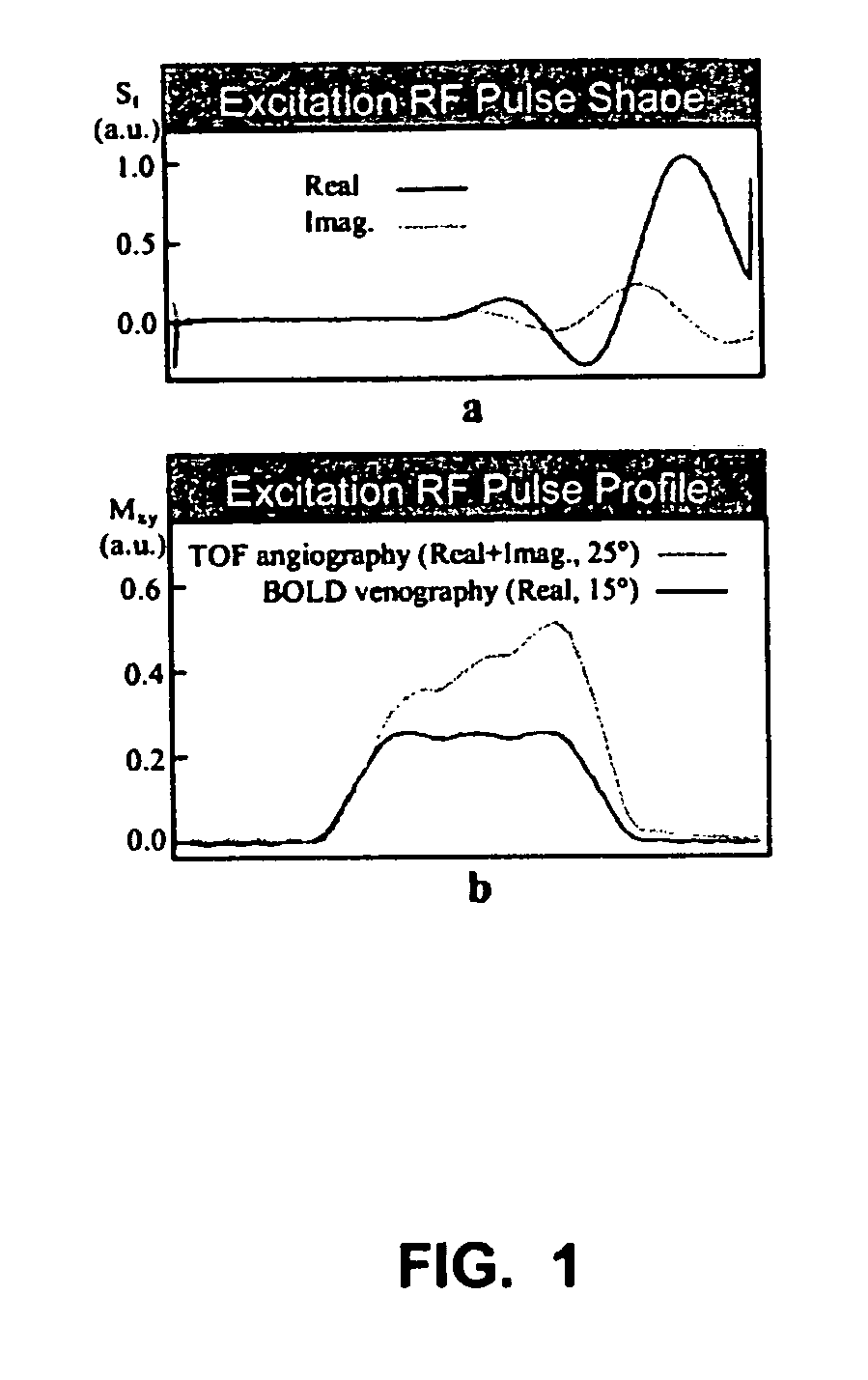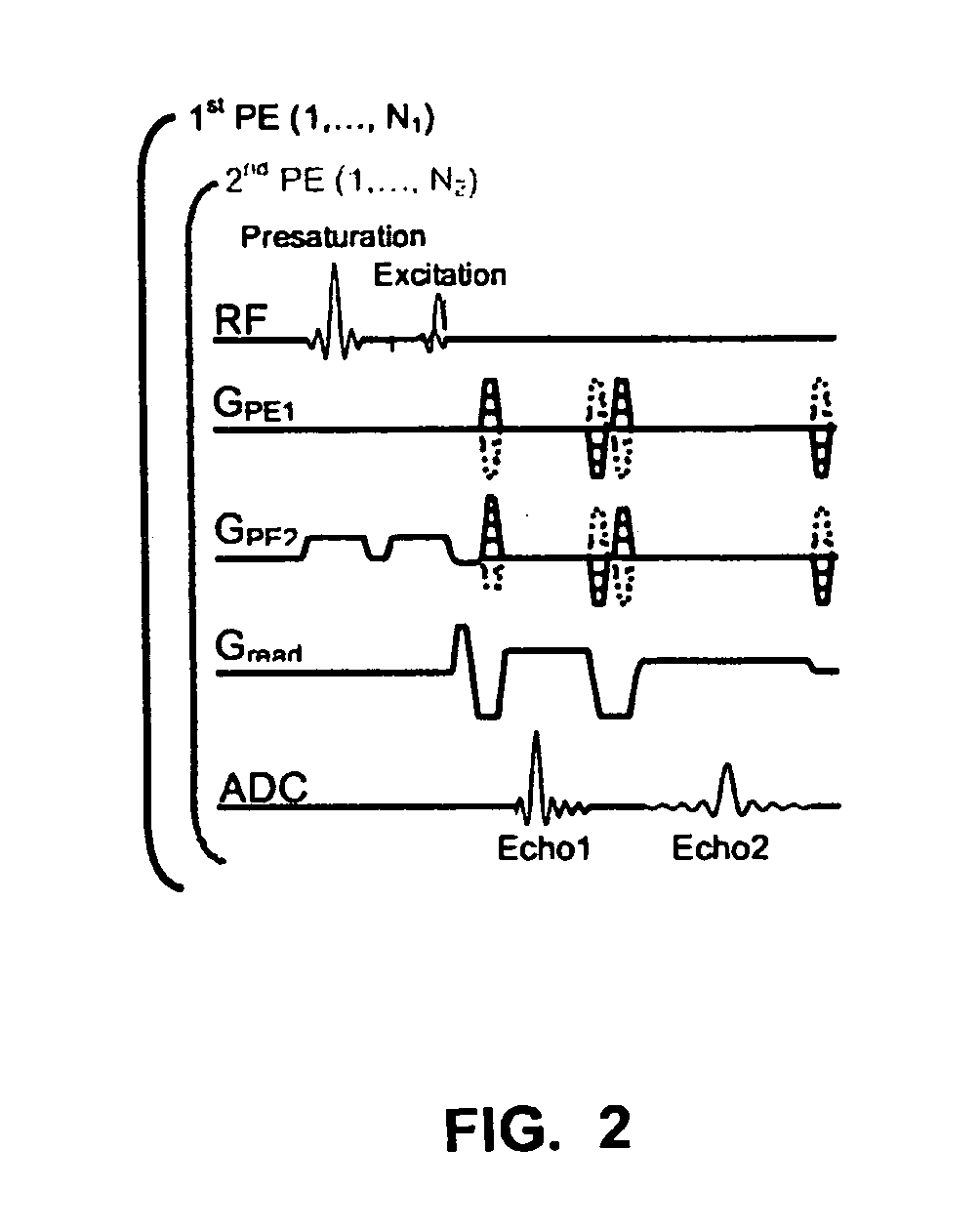Echo-specific k-space reordering approach to compatible dual-echo arteriovenography
- Summary
- Abstract
- Description
- Claims
- Application Information
AI Technical Summary
Benefits of technology
Problems solved by technology
Method used
Image
Examples
Embodiment Construction
[0019]In MRA the arteries are depicted by virtue of their hyper-intense vascular signal, and the background tissue signal should be suppressed. The opposite is true in the MRV. To accommodate these conflicting requirements, the dual-echo scan parameters for the MRA and MRV should be individually adjustable.
[0020]To this end, dual-echo scan parameters compatible for both MRA and MRV vascular contrast can be achieved, according to the present invention, by exploring K-space characteristics and employing an echo-specific K-space reordering scheme. In particular, because the tissue contrast is determined predominantly by the K-space center characteristics, the vascular contrast for the MRA and MRV can be enhanced by maximally separating the K-space center acquired for the MRA from that for the MRV. Pursuant to the echo-specific K-space reordering scheme of the invention, the scan parameters for the MRA and MRV can be uncoupled and adjusted independently. For instance, the uncoupled scan...
PUM
 Login to View More
Login to View More Abstract
Description
Claims
Application Information
 Login to View More
Login to View More - R&D
- Intellectual Property
- Life Sciences
- Materials
- Tech Scout
- Unparalleled Data Quality
- Higher Quality Content
- 60% Fewer Hallucinations
Browse by: Latest US Patents, China's latest patents, Technical Efficacy Thesaurus, Application Domain, Technology Topic, Popular Technical Reports.
© 2025 PatSnap. All rights reserved.Legal|Privacy policy|Modern Slavery Act Transparency Statement|Sitemap|About US| Contact US: help@patsnap.com



